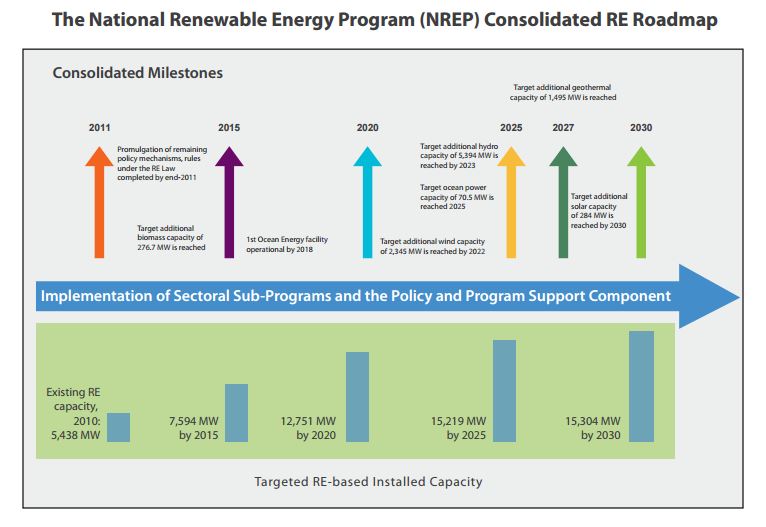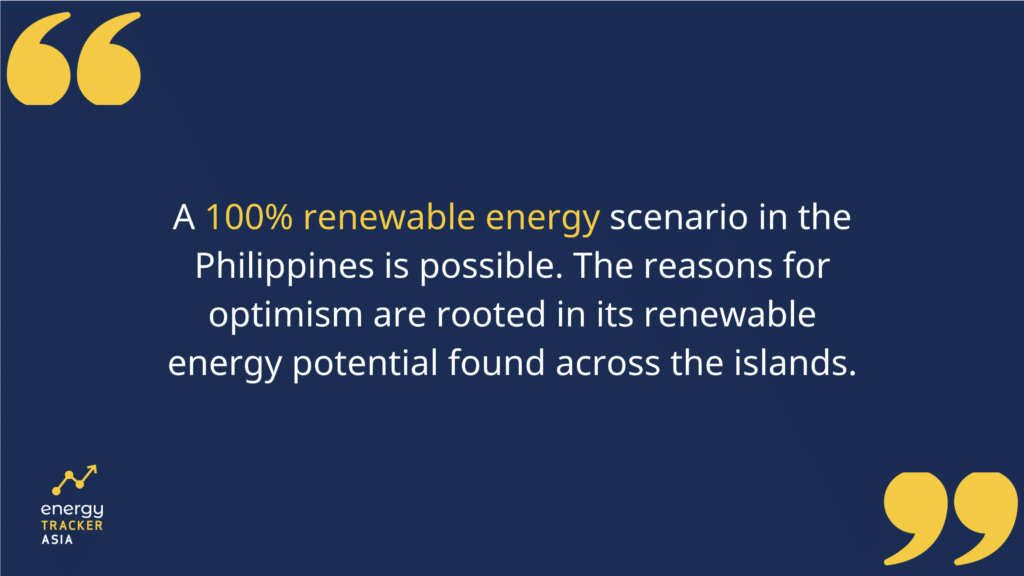Renewable Energy in the Philippines – Current State and Future Roadmap
Photo by FreezingTime from Getty Images
09 June 2024 – by Viktor Tachev Comments (0)
Like other Southeast Asia countries, the Philippines faces the challenge of a rapidly growing population, growing energy demand and climate change. Yet, where it differs and stands out is in in the response to these trends. Compared to its neighbours, the Philippines is a leader in renewable energy.
Over 47% of its total energy use comes from green or low-carbon sources. However, the Philippines has an abundant potential for various ready-to-deploy renewable energy sources that it is yet to tap into. The natural renewable resources, paired with ambitious and supporting clean energy policies, promise a bright future.
The Current Situation of Renewable Energy in the Philippines 2024
Ember’s estimations reveal that, in 2023, the Philippines relied on fossil fuels to produce 78% of its electricity.
Over 20% of the Philippines’ electricity comes from low-carbon sources, with the majority coming from hydropower and geothermal. Currently, the country ranks third globally in terms of installed geothermal capacity, only behind the USA and Indonesia.
Worryingly, renewables like solar and wind made up just 2.5%. This is way below the global average of 13% and even the average among other ASEAN countries, which sits at 4.4%.
The total clean energy capacity in the Philippines today sits at 8.2 GW.Throughout 2024, the government expects at least 4 GW of clean energy projects to come online. The additional capacity is intended to strengthen the grid’s stability, helping to meet the growing energy demand in the country without any supply deficiencies and potential power interruptions, particularly during peak demand periods.
Renewable Energy Potential in the Philippines
In 2011, the country adopted an ambitious plan aiming for 15.3 GW of renewable power capacity by 2030 and over 20 GW by 2040. To achieve this lofty goal, the National Renewable Energy Program (NREP) laid out a five-step plan to reach all targets by 2027.
- Raise geothermal capacity by 75%
- Expand hydropower capacity by 160%
- Add an additional 277 MW of biomass power capacity
- Extend an additional 2,345 MW of wind power capacity
- Develop an ocean energy facility
However, according to the WWF-Philippines Building Momentum for Low Carbon Development study, an even more ambitious scenario of 100% renewable energy is feasible. The reasons for optimism are rooted in the renewable energy potential in the Philippines. The report shows that the country could aim higher by capitalising on all available alternative renewable energy resources. This includes adding 1,200 MW of geothermal, 2,308 MW of hydropower, 235 MW of biomass, and 7,404 MW of wind, all before 2030.
In fact, the Philippines, alongside Indonesia, is the country with the highest concentration of geothermal power generation in Asia. It has the world’s third-largest installed geothermal power capacity at 1,918 MW coming a close second behind the United States.
Furthermore, the Philippines has 178 GW of estimated offshore wind potential. According to IRENA, the country also has 122 GW of solar PV potential.

Currently, the Philippines targets a 35% renewable energy share in the power generation mix by 2040 in the Reference Scenario of its Energy Plan 2020 – 2040. As per the more ambitious Clean Energy Scenario, the country will aim for a 35% clean energy share by 2030 and 50% by 2040. In total, by 2040, the country aims to have 52.8 GW of renewable energy sources.
While ambitious, both targets still remain below IEA’s Net Zero Emissions scenario which calls for a global target of 60% by 2030.
Advantages and Challenges
The Philippines’ ambitious renewable energy transition would guarantee energy security and self-sufficiency, accompanied by reduced reliance on imports. It would also boost local economic development and promote a favourable investment climate. Naturally, this would result in more jobs and reduce health and welfare costs.
Currently, the country has some of the most lucrative government incentives for rural electrification – at least on paper. These should transform into attractive opportunities for private investment. However, private companies are yet to show considerable interest in energy access initiatives.
Access to financing remains a massive problem. Today, only a few domestic banks support renewable energy projects in the region.
An International Renewable Energy Agency presentation showed that some of the main challenges revolve around high upfront and technology costs, inaccessible financing and a lack of competitiveness in the market.
The Enablers for the Philippines’s Renewable Energy Transition
Despite the challenges, there are opportunities to capitalise on renewable energy in the Philippines. For instance, the government has developed a framework of fiscal and non-fiscal incentives. Among these are an income tax holiday, a duty-free importation of equipment and VAT-zero rating, tax credits on domestic capital equipment, tax exemption on carbon credits, priority connection to the grid, and the Green Energy Option Program (GEOP).
In 2019, the Philippines discontinued its feed-in-tariff (FIT) programme and instead switched to reverse auctions. The goal of this is to ensure better support for large-scale solar energy projects. This strategy resulted in more competitive solar and wind generation costs at a grid level. At that time, the country managed to achieve the lowest bid within the region – USD 0.044 per 50 MW solar plant.
Alternative financing models are sorely needed to accelerate renewables adoption. These include crowdfunding through platforms like Kiva, which has helped raise over USD 250,000 for renewable energy projects development in the Philippines and India.
Today, the Philippines implements all six power policy categories tracked by Climatescope, including Renewable energy target, Renewable energy auction, Feed-in Tariff, Net Metering, Import tax incentives, and VAT incentives. As a result, it is currently considered the world’s fourth-best emerging market for clean energy investments.
The Department of Energy
In 2018, the Department of Energy (DoE) issued guidelines establishing a “Renewable Energy Trust Fund“. Its goal is to accelerate the renewable energy transition through research and development. The scheme is funded through several sources, including grants, donations, emission fees and contributions.
The DoE also has other ongoing initiatives to support the adoption of smart-grid technologies across the country’s islands. Currently, the Philippines, alongside Myanmar, is the largest market for off-grid solar energy in Southeast Asia. In 2019 alone, they have sold between 30,000 to 40,000 units.
Renewable Energy Projects in the Philippines
As electricity demand continues to grow, the government has promised to assist the private sector in the timely completion of their renewable energy projects in the Philippines to generate additional capacities.
Local and International Initiatives
The government has been running various projects intended to improve energy access and energy system resilience across the country. Previously, it launched the “Access to Sustainable Energy Project” in cooperation with the World Bank, a USD 23 million project. It was followed by the successful completion of the “Market Transformation through Introduction of Energy-Efficient Electric Vehicles Project” in partnership with the Asian Development Bank – a USD 405 million project.
Additionally, there is a focus on promoting renewables within specific sectors. The Renewable Energy Program for the Agriculture and Fishery Sector (REP-AFS), introduced in 2020, aims to promote solar, wind, hydro, small-scale geothermal, and biomass for fuel and power generation within those industries.
The latest policy development on electrification programs, the “Microgrid Systems Act”, aims to achieve 100% total electrification by 2028 through four stages. The government expects the policy’s implementation to play a big role in the electricity ecosystem and power distribution and generation in underserved and unserved areas of the country.
How Renewable Energy in the Philippines Affects the Coal Industry
With minimum fossil fuel resources, the Philippines has been heavily dependent on oil, coal and gas imports for power generation. Consequently, this subjects the country to price volatility and supply constraints. Due to this continued dependence on foreign fuel, the Philippines now has some of Southeast Asia’s highest electricity costs.
Importantly, however, the country needs to continue to strive towards moving away from import-dependence to one of domestic power production sourced from its vast renewable energy potential. Over time, this shifting energy situation in the Philippines, if sustained, will ultimately eat into fossil fuel’s dominance and dramatically reduce everyday energy costs across the island nation.

by Viktor Tachev
Viktor has years of experience in financial markets and energy finance, working as a marketing consultant and content creator for leading institutions, NGOs, and tech startups. He is a regular contributor to knowledge hubs and magazines, tackling the latest trends in sustainability and green energy.
Read more






